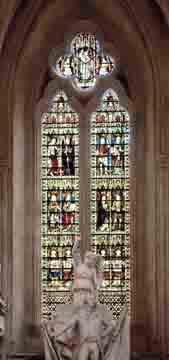Richard Ewart Trevithick was the great grandson of Richard Trevithick, who developed the first high pressure steam engine and built the first full scale working railway steam engine. At the centenary service for his great grandfather, in Westminster Abbey, Richard Ewart laid a floral caplet beneath the stained glass window erected in memory of his great grandfather.

Richard Ewart was born on 7 October 1891 in Carlisle, the son of Arthur (a mechanical engineer on the railway) and Annie Trevithick. In 1901, the family were living at Monks Coppenhall. Whilst working as superintendent at Earlstown, Arthur and his family moved to Moore Hall, moving to Wolverton in 1916, when he was appointed carriage superintendent to the North London Railway.
Richard was educated at Bilton Grange, Rugby and Cheltenham College, before taking up an apprenticeship with the London and North Western railway and studying at the Technical Institute, Crewe.
In 1914, he travelled to New York aboard the ‘Lusitania’ and spent some time in the USA, studying mechanical engineering practice. He returned home to take up the post of assistant manager at the ‘Dewrance’ engineering company.

He joined the Royal Army Service Corps in September 1914 and the following month, went to France as officer in charge of workshops and responsible for the repair and maintenance of 120 vehicles.
In March 1916, he was promoted to Captain and became an instructor in tank driving and maintenance. He joined the Machine Gun Corps and was placed in command of a section. He went with the first group of tanks to Le Havre, where he was in charge of the offloading of the vehicles and commanded 25 men. He moved to Yvrench, but badly injured his knee and was deemed unfit for service abroad in December 1916. By the following December, he was employed by the Ministry of Munitions, working first in Bristol and later in Whitehall.
On 19 June 1919, he married Marie Francisca Miller at St Margaret’s, Westminster. They had one daughter, Noel Claire Trevithick, who was born in 1926, at Chislehurst, where the family was living.
In the following years, he became chartered to the Institutes of both Civil and Mechanical Engineers. He was noted for his work to develop the use of high pressure steam valves on railway locomotives. He also travelled widely in the course of his work, visiting Buenos Aires in 1931, Madeira in 1935, Auckland in 1958 and Mombasa in 1959.
Richard died in Beaminster, Dorset in 1973, aged 81 years.
